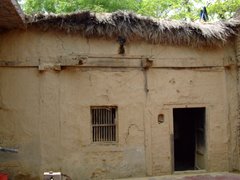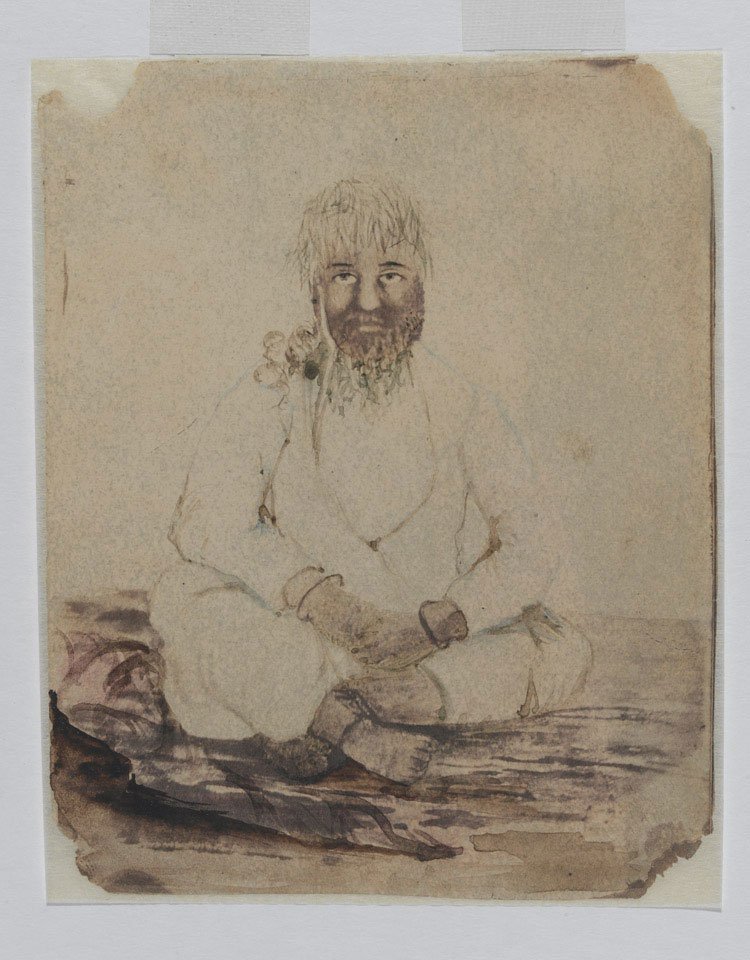.jpg)
About 200-year-old mud constructed house of the great leader of 1857 war Tatya Tope at Bithoor in Kanpur

Pa and the Anglo-Indian War of
TATYA TOPE'S PRESENT DAY DESCENDANTS [FROM INTERNET -GOOGLE-IMAGE]
Tatya Tope |
LALU PRASAD YADAV GRANTED EMPLOYMENT TO PRAGATI AND TRIPTI, DAUGHTERS OF VINAYAK RAO TOPE IN THE INDIAN RAILWAY ON THE INITIATIVE OF NEENA JHA AND SHIVNATH JHA ON JULY 4, 2007
[FROM INTERNET NEWS]
ANOTHER PICTURE OF TATYA TOPE DESCENDANTS/RELATIVES; FROM INTERNET-GOOGLE-IMAGES
1857 Army of Nana Saheb & Tatya Tope
Shaheed Tatya Tope(1814 - 1859)
A hero of the India's First war of Independence1857. His very name made the mighty English
general’s tremble. Deceived by his friend, he faced death like a hero, for the sake of Mother India.
SHAHEED TATYA TOPE
FOUGHT 155 BATTLES AGAINST BRITISH EAST INDIA COMPANY.
FOR THE FREEDOM OF MOTHER INDIA.
A statue of freedom fighter of 1857 Tatya Tope has been installed at the place where he was hanged on April 17, 1859 at Shivpuri. Tatya Tope was the commandeer-in-chief of Maharani Laxamibai. He was matchless in Guerilla warfare. He was arrested by the British treacherously. The Kachhwaha ruler of Narwar Manu Singh was his friend. He called Tatya Tope on some pretext and informed the British of his presence. Tatya Tope was arrested on April 7, 1859 and was fried at Shivpuri. Before being hanged to death Tatya Tope said in the court “ I am not a slave to the British. I am a servant of Peshwa. Your accusations do not prove me guilty of any crime. I waged a war against you, so I am ready for death”.
Tatia Tope, like other freedom fighters, was one of the great heroes who fought courageously for India’s freedom in 1857. He was born in 1814 in a village Yeola in Maharashtra. His father Pandurang Rao Tope shifted with Peshwa to Bithur. Tantia and the adopted sons, Nana Sahib and Maharaja Madhav, of Peshwa became good friends. All his loved ones called him Tatia because he always used to wear a hat that was gifted to him by Peshwa.
Tatia moved his first step against the British in 1851, when Lord Dalhousie deprived Nana Sahib of his father’s pension. In May 1857, he joined the political movements and established Nana Sahib’s authority. Britishers were trying to grab everything- the wealth, kingdom and the whole empire of the country. This became the biggest reason of discontent and revolt. He occupied Kanpur and then shifted to Kalpi to join Rani Lakshmi Bai to occupy Gwalior. Unfortunately, they lost the battle, Rani was killed and Britishers expanded their rule in Gwalior. After losing, he collected a huge force to fight against Britishers and was successful in capturing many forts of India. In Kalpi, he had established a center to manufacture arms. When he came to know that Britishers are short of resources, he took advantage of it and confronted Kanpur. Altogether, he fought 150 battles.
Tantia, the name of terror for the English, was the one who shook the established niche of the British Empire. He was constantly fighting to win over the whole of India but unfortunately he was betrayed by one of his friend. Britishers caught hold of him and hung him to death on April 18, 1859. This incident brought tears in all eyes and he became the Supreme Commander of India’s independence.
Nana Sahib
Belsare's account
Shree K. V. Belsare's book on the Maharashtrian Saint Shree Brahmachaitanya Gondhavalekar Maharaj states that after losing the battle with the British, Shree Nanasaheb Peshwe went to Naimisharanya, the Naimisha Forest in the vicinity of Sitapur, Uttar Pradesh where he met Shree Gondhavalekar Maharaj, who assured Shree Nanasaheb Tumachya Kesala dhakka lagnar naahi. Ya pudhil ayushya tumhi Bhagavantachya chintana madhe ghalavave. Me tumachya antakali hajar asen.(No one can harm you now. You should spend rest of your life in God's service. I will be near you at your last breath) Shree Nanasaheb then was living in a cave in Naimisharanya with his 2 servants (from 1860 to 1906, until his death). According to the book, he died on 30th / 31st Oct / 1st Nov 1906 at the age of 81 years, when Shree Gondhavalekar Maharaj was present with him. Shree Maharaj performed all his rituals.
Initially Shree Nanasaheb was very much upset from losing the kingdom in battle with the British. But Shree Gondhavalekar Maharaj explained to him the "Wish of God". He said, "It is very sad that Nanasaheb had to lose the battle and the kingdom in such a tragic way, but fighting with the British is totally different than fighting with Mughals. People from the middle class who know the British language will lead the next freedom war against British. Soon they will come into the picture. Your role as King or warrior has finished, and now you need to focus on the 'internal war'." Initially it was very difficult for him to accept this fact, but slowly, Nanasaheb accepted this and made progress on the path to God. He was staying in the cave along with his 2 servants who used to go to Ayodhya to bring newspapers (Kesari) and foodstuffs. Nanansaheb used to visit "Pashupatinath" in Nepal and to meet his family - Samsherbahaddar & wife.[21]
| Preceded by Bajirao II | Peshwa 1851-1857 | Succeeded by none |

